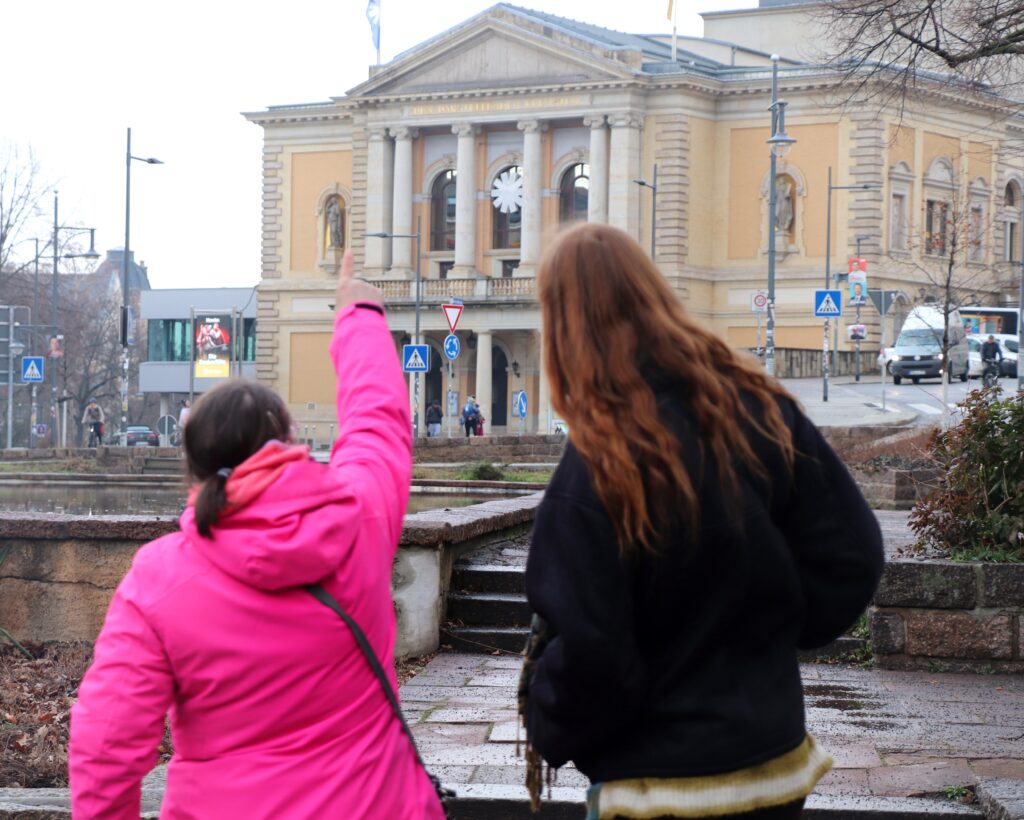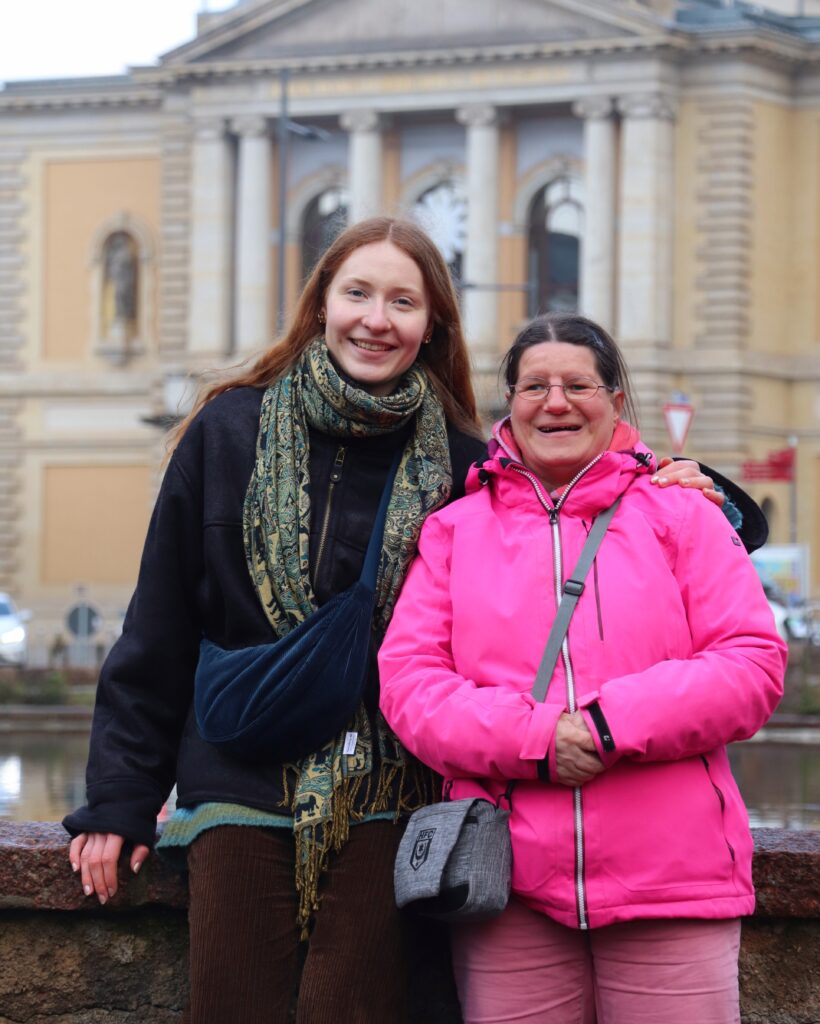Culture should be for everyone – but is it really? While cultural offerings are on the rise, accessibility often falls through the cracks. However, solutions exist for many of the current obstacles. How cultural offers can become more inclusive and what the project “Kulturzeit für alle” (cultural time for all) has to do with it.
Monday: Puschkino, Tuesdays: poetry slam at the Palette and on the weekends to the theatre. The dates of HUNGER, the literary salon in the WuK are marked in the calendar just as the dates of Halle lacht (Halle laughs). The city’s cultural offerings are broad and diverse. There should be something for everyone, right? A look into who is actually sitting in the audience shows: people with disability are hardly represented.
And yet, cultural events should be accessible to all citizens. Doesn’t matter if it’s a rock concert or the opera, cultural events are spaces of interaction as well. Exited conversation about the set list or the stage design bring people together and those who have few points of contact with each other in their everyday lives are able to feel a sense of community and togetherness. Culture connects people from different backgrounds.
Culture cannot and should not only entertain or offer a break from everyday life. It is also about discussing social grievances and adopting alternative perspectives. But if you have a closer look, it is not only on the stage or screen that grievances become apparent.

Stroboscopic effects and the UN Convention on the Rights of Persons with Disabilities
Missing audio description or subtitles, countless stairs, missing awareness regarding stroboscopic effects as well as volume are nothing uncommon. While climbing stairs is at most annoying or tiresome for most people, the issue becomes a real challenge for neurodivergent people or people with disabilities.
These hurdles complicate many people’s access to cultural events. And it is precisely these barriers that the signatory states to the UN Convention on the Rights of Persons with Disabilities actually opposed when they signed it. Article 30 is appropriately entitled “Participation in cultural life, recreation, leisure and sport”. According to the article, states parties must ensure that people with disabilities have access to cultural activities.
Harry Potter and Ikkimel – Accessibility? No Problem!
Different institutions have already proven that accessibility is not some kind of utopian ideal. Cultural institutions can do a lot to be more accessible. Leading by example would be the state museums in Berlin. Exhibition and event information are provided in easy language. In Bochum, the theatre uses induction loops in order to enable better acoustics for people with hearing aids. Meanwhile in London, there are advertised relaxed performances of the play “Harry Potter and the cursed child”. From the security check to the seats everything is tailored towards the needs of neurodivergent people.
Recently, artists have put emphasis on better accessibility too. The singer Ikkimel announced that her new tour “Hände hoch, Hose runter 2025” (“Hands up, pants down 2025”) would provide a more inclusive space for pregnant and neurodivergent people. In February, the radio channel MDR Jump organised as part of their concert series “Bands for friends” music interpreters for people with hearing impairments. Anyone who wants to will find solutions to make culture available for everyone.
But you don’t need to look far to find measures for a more barrier-free cultural landscape. Even here there are initiatives who want to make culture more accessible for people with disabilities – like the project “Kulturzeit für alle” in Halle.
Together instead of alone
A so-called tandem project is supposed to make it possible for people with and without disabilities to explore the cultural offer of Halle. After a short ‘get to know each other’ people with similar cultural interests and expectations are matched by the organizers of the project. A first meeting of the tandem partners is held in the rooms of the Freiwilligenagentur (volunteer agency). With a small budget provided by said agency the individual journey of discovery can begin in one’s own pace.
Sindy and Laura make up such a tandem since December 2024. Since then the two went to the opera and visited the Halloren chocolate museum together. In any case both women have enough ideas for more activities. “We’re already planning a visit to the cinema, the zoo and the city’s botanical gardens to enjoy the spring,” says Laura.
Planning, planning and alternatives

But not every idea can come true in the end. “After joint discussion, where to go in general, the second step is checking the accessibility,” explains Laura. Destinations within walking distance, elevators and information in simple language are a must. Despite planning, the cultural tandem sometimes faces unforeseeable hurdles. “It’s important not to be angry in silence but rather to make the institutions aware of their deficits in regards of accessibility”. A helpful tool for this task is the questionnaire provided by the volunteer agency. This way the tandems can make cultural centres aware of their barriers and hurdles.
Yet, many of the hurdles are still mastered by the two women together. “If we come across a staircase that doesn’t have an elevator or a handrail, it would present a hurdle that Sindy wouldn’t be able to overcome on her own. If there are two of us, these situations are defused, as I can simply give her the needed help to go up or down the stairs.”
A tandem is not a one-way street
The tandem is not a one-way street and Laura is not Sindy’s chaperone. While Sindy gains access to more cultural events, Laura discovers new places and perspectives she might not have noticed on her own. This is especially the case when Sindy and Laura need to look for alternatives if the actual destination has too many obstacles. “Together we discover new things and view the city from a different perspective,” says Laura. Thanks to the tandem Laura notices way more barriers that she wouldn’t have noticed before.
Programmes like “Kulturzeit für alle“ are an important step for more barrier-free environments. “I think that cultural institutions are first becoming aware of the demand for accessibility. In many cases, however, this can only be created through projects such as the cultural tandem of the volunteer agency.” An increasing awareness for the needs of people with disabilities would allow in the long term that people with disabilities could visit these cultural institutions on their own without the need of aid.
Text: Leonie Brommer
Photos: Sulamith Fenkl-Ebert, © Freiwilligen-Agentur Halle (Saale)
Translation: Jonne Pietras
